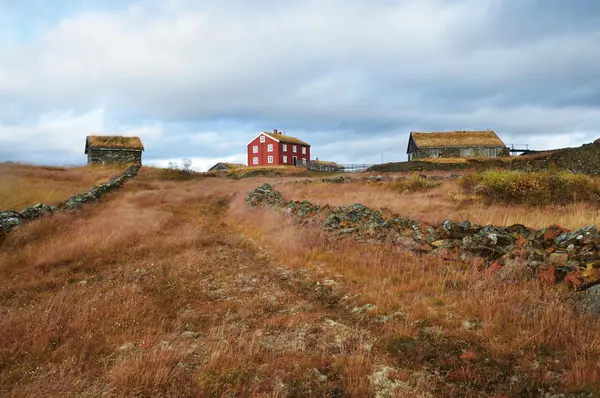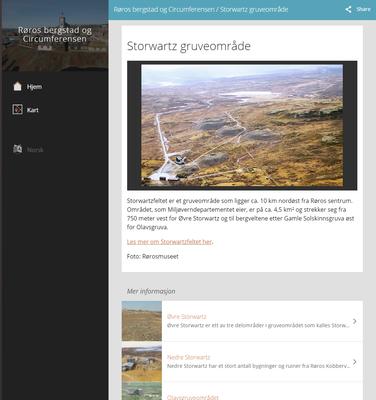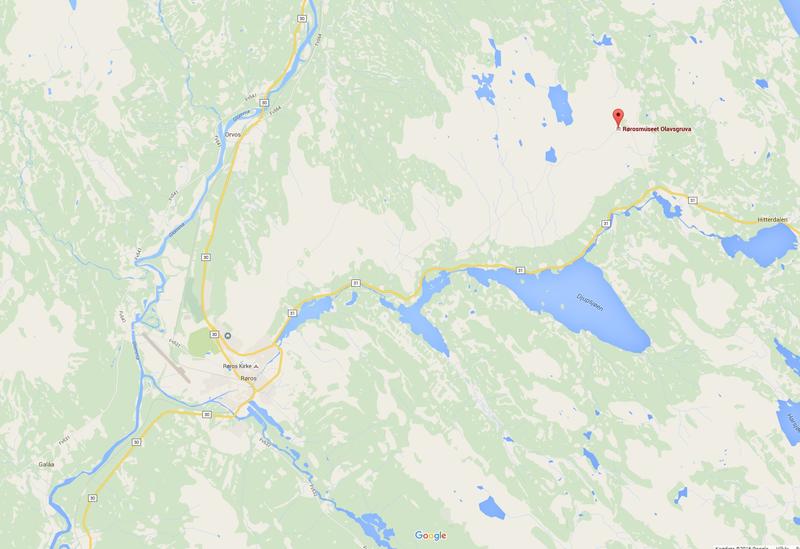Remains and cultural monuments
The Storwartz mining area is about 4.5 square kilometres in size and includes nine significant mines (see below). Visible in the landscape are remains of mine entrances, piles of waste rock, overhead cable transportation systems, shaft openings, miners’ barracks, managers’ houses, dams, water wheel trenches and an extensive network of water channels.
Underground are many kilometres of mining passageways, transport roads and rails, shafts with hoisting equipment and water pumps. All of these historic and cultural remains above and below ground bear witness to more than 300 years of comprehensive activity and show how mining technology developed over centuries. The story behind this activity is the story of generations of skilled workers and craftsmen who were employed by The Røros Copper Works.
QR-tours at Storwartz
Storwartz is an interesting cultural area with numerous cultural monuments. Many monuments are marked with QR codes that provide information about the buildings, constructions and the area’s history. Use your cell phone and follow a walking tour of the cultural landscape for an exciting and interesting experience!
Storwartz - Mines and operational periods
1. Gamle Storwartz: 1645–1702, 1715–1727, 1917–1929
2. Nye Storwartz mine: 1708–1947
3. Hestkletten mine: 1660–1757
4. Myrgruva: 1694–1790
5. Christianus Quintus mine: 1692–1777, 1888–1894, 1905–1915
6. Nyberget gruve: 1650–1717, 1861–1891, 1906–1914
7. Olavsgruva: 1937–1972
8. Nye Solskinnet mine: 1854–1903
9. Gamle Solskinnet mine: 1673–1718, 1870–1890


